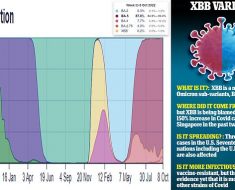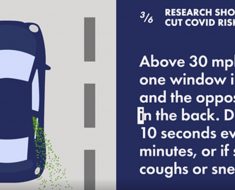An epidemiological study from Sweden shows that early programmatic effects of vaccinating individuals older than 80 years of age, long-term care facility (LTCF) residents, and those receiving home care can successfully reduce infection and mortality rates caused by the severe acute respiratory syndrome coronavirus 2 (SARS-CoV-2). The paper is currently available on the medRxiv* preprint server while it undergoes peer review.
 Study: The early impact of vaccination against SARS-CoV-2 in Region Stockholm, Sweden. Image Credit: Hyserb/ Shutterstock
Study: The early impact of vaccination against SARS-CoV-2 in Region Stockholm, Sweden. Image Credit: Hyserb/ Shutterstock
Introduction
Vaccination programs against coronavirus disease 2019 (COVID-19) in Sweden prioritize those most at risk of severe disease from SARS-CoV-2 infection, with the end goal of safeguarding the most vulnerable and, in turn, the healthcare system as a whole.
There are four overarching phases introduced in Sweden since the start of the program. In the first phase, all adults living in LTCF, those receiving home care and their household contacts, and healthcare staff working with them have been prioritized to receive the vaccine.
Then, the program covered adults older than 65 years, transplant recipients, and those on dialysis in the second phase. The third phase covered adults with other risk factors, and then finally, adults without risk factors over 18 years of age were a part of phase four.
In Stockholm, vaccination in phase one began on December 27, 2020, while phase two began on March 8, 2021, inviting adults older than 80 years of age. On March 29, 2021, adults older than 75 years of age were also invited.
In this study, researchers wanted to assess the exact early impact of the vaccination program that has been introduced in Stockholm.
A population-based approach
This retrospective, population-based study aimed to appraise the incidence of SARS-CoV-2 and subsequent deaths within thirty days of a PCR-confirmed diagnosis in the cohorts targeted for vaccination and then compare the findings with a control group not targeted for vaccination.
Three mutually exclusive groups have been defined for this study: those in LTCF or receiving home care, those aged 80 or older (80+), and a composite control of those aged between 18 and 79 years of age. Data has been extracted from the Swedish VAL database, containing information from more than ten other healthcare-related databases in the Stockholm region.
The analyses in this study have been restricted to a period between August 31, 2020, to May 2, 2021, to cover both the second and third waves of COVID-19 in Stockholm. Conversely, data from the first wave were not included due to the lack of widely available testing when the pandemic just started.
A significant drop in infections and deaths
The highest number of infections with SARS-CoV-2 was recorded in the control group (182,695). On the other hand, there were more infections in the LTCF/home care group (5232 pre-vaccination and 1537 post-vaccination) compared to the 80+ group (2276 pre- 186 post-vaccination).
The study has estimated that vaccination could prevent 2873 infections in the LTCF/home care group and 239 in the 80+ group, while the estimated number of prevented deaths was 808 for the LTCF/home care and 46 for the 80+ group. During the study period, more deaths were recorded in the LTCF/home care group within thirty days of a positive SARS-CoV-2 test.
Furthermore, the incidence rate ratio (IRR) for fatal outcomes within 30 days of a positive SARS-CoV-2 PCR test dropped from 179 before vaccination to 45 after vaccination for the LTCF/home care group, as well as from 20 before vaccination to 9 after vaccination for the 80+ group, in comparison to the composite control.
Preventing the third wave
The authors of this suggest that the vaccination of the LTCF/home care and 80+ groups were successful in preventing a third wave in these groups of the same size as the control group.
Nonetheless, the study has certain limitations. It could not link individual-level vaccine data akin to recent studies from Israel, and vaccine coverage data has been primarily based on LTCF and age.
In conclusion, the early programmatic effects of vaccinating two of the most vulnerable groups in Sweden successfully reduced infection rates with SARS-CoV-2 and deaths. Albeit encouraging, further research on this topic will shed more light on the optimal approach.
*Important notice
medRxiv publishes preliminary scientific reports that are not peer-reviewed and, therefore, should not be regarded as conclusive, guide clinical practice/health-related behavior, or treated as established information.
- Isitt, C. et al. (2021) "The early impact of vaccination against SARS-CoV-2 in Region Stockholm, Sweden". medRxiv. doi: 10.1101/2021.09.02.21263046. https://www.medrxiv.org/content/10.1101/2021.09.02.21263046v1.full.pdf+html
Posted in: Medical Science News | Medical Research News | Disease/Infection News
Tags: Coronavirus, Coronavirus Disease COVID-19, Dialysis, Healthcare, Home Care, Mortality, Pandemic, Research, Respiratory, SARS, SARS-CoV-2, Severe Acute Respiratory, Severe Acute Respiratory Syndrome, Syndrome, Transplant, Vaccine

Written by
Dr. Tomislav Meštrović
Dr. Tomislav Meštrović is a medical doctor (MD) with a Ph.D. in biomedical and health sciences, specialist in the field of clinical microbiology, and an Assistant Professor at Croatia's youngest university – University North. In addition to his interest in clinical, research and lecturing activities, his immense passion for medical writing and scientific communication goes back to his student days. He enjoys contributing back to the community. In his spare time, Tomislav is a movie buff and an avid traveler.
Source: Read Full Article





